
‘Among the most widely seen photographs of Hollis Frampton is one of him as a young man, a self-portrait taken in 1959, if we are to trust the narration he composed to accompany its inclusion in his 1971 film (nostalgia). In the image, Frampton sits against a neutral backdrop, looking to his right, as if intently scrutinizing something just outside the frame. His shoulders press forward, suggesting that his unseen hands are resting crossed in his lap, and he sports a neat dark jacket and tie, their conservatism offset by a beatniky beard and hair that would have been considered longish in the 1950s, combed back into a Victorian wave. “As you see, I was thoroughly pleased with myself at the time, presumably for having survived to such ripeness and wisdom, since it was my twenty-third birthday,” the narrator says in (nostalgia). “I focused the camera, sat on a stool in front of it, and made the exposures by squeezing a rubber bulb with my right foot.”
‘When he took this photo, Frampton was working as an assistant in a commercial photography studio in New York, where he had moved the previous year, and was sharing an apartment with sculptor Carl Andre, who had been his high school classmate at Phillips Academy in Andover, Massachusetts (as had painter Frank Stella, with whom they would share studio space). Due to his dispute over the necessity of a required history course, Frampton had failed to graduate from Andover, thus forfeiting a scholarship to Harvard and instead attending Western Reserve College in Cleveland. While there, he struck up a correspondence with Ezra Pound, who was then a mental patient at St. Elizabeth’s Hospital in Washington, D.C. Frampton—who was writing poetry at the time—left Cleveland to move near Pound, visiting him daily in the hospital, while the older poet continued to compose The Cantos, his sprawling epic, dense with reference and allusion, which would remain unfinished at his demise. Pound’s high modernism would serve as a touchstone for Frampton, as would the parallel modernisms of Marcel Duchamp, Jorge Luis Borges, and James Joyce. Ironically, Frampton, too, would embark upon an ambitious, large-scale project—the proposed thirty-six-hour film cycle Magellan—that would be cut short by his death from cancer in 1984, at age forty-eight.
‘Another oft reproduced image of Frampton is entitled Portrait of Hollis Frampton by Marion Faller, Directed by H. F. It was taken in 1975 by Faller, the photographer with whom Frampton lived during the last thirteen years of his life. The picture shows him staring, eyes wide and pupils contracted, almost into the lens of the camera, his hands raised beside his head, palms outward. In the darkness, a horizontal slit of light draws a line across his eyes and onto the middle of both of his hands. His hair is wilder than at age twenty-three—the light beam illuminates shaggy bits jutting out from his temples—and his beard is fuller, now flecked with white. The setup cannily alludes to the mechanics of both photography and cinema, of light projected and recorded, but in its alien strangeness resembles a promotional still from a science-fiction movie. It almost appears as if the light is not so much being thrown on him as projected outward from his eyes and hands. In the earlier self-portrait, Frampton seems relatively staid, as if looking toward the past, trying to emulate an early twentieth-century poise. But here, at age thirty-nine, he stares as if into a vision, ready to walk forward into the unknown, ecstatic.
‘In the time between these two photographs, Frampton had established himself as one of the foremost members of the American avant-garde, part of a new generation of artists who came to fruition in the late 1960s, dramatically shifting the terms of both experimental film and the intellectual thinking on cinema as a whole. By the end of his career, he had completed close to one hundred films (including the individual one-minute Pans for Magellan) and numerous photographic series; helped establish the pioneering Digital Arts Laboratory at the Center for Media Study at the State University of New York at Buffalo in 1977; published Circles of Confusion: Film, Photography, Video—Texts 1968–1980, his influential collection of theoretical essays and other writings that had originally run in Artforum, October, and elsewhere; and been honored with retrospectives at the Walker Art Center in Minneapolis and the Museum of Modern Art in New York. At a time when many of his filmmaking colleagues still kept their distance from newer electronic media, he not only embraced and wrote about video but also delved into xerography and computer programming.
‘In standard histories of experimental cinema, Frampton’s work is usually considered part of “structural film,” a category invented by P. Adams Sitney in a 1969 essay that would later be revised into a chapter of his landmark 1974 study Visionary Film. Sitney coined the term to describe what he saw as a new tendency in the American avant-garde, typified by the films of Frampton as well as those of Michael Snow, George Landow, Tony Conrad, and others. “Theirs is a cinema of structure,” Sitney wrote, “in which the shape of the whole film is predetermined and simplified, and it is that shape that is the primal impression of the film”—a sharp divergence from the work of an older generation of filmmakers, including Maya Deren, Stan Brakhage, and Kenneth Anger, who, in his view, had progressed over time toward a greater internal complexity of form. He compared structural film to minimalism in the visual arts and serial composition in music, contemporaneous movements that likewise stressed formal reduction and repetition. Frampton, however, rejected Sitney’s periodization, denouncing “that incorrigible tendency to label, to make movements, [which] always has the same effect, and that effect is to render the work invisible.”
‘Nevertheless, Frampton did agree that a new sensibility was afoot. Describing his own development, he recalled that “there was something called the [Film-Makers’] Cinematheque in New York, which became a kind of hangout. I met other people who were trying to make films: Joyce Wieland, Michael Snow, Ken Jacobs, Ernie Gehr after a while, although he was somewhat younger. Later on, Paul Sharits, who was at the time living in Baltimore.” These are all figures whose work Sitney classified under structural filmmaking, but Frampton saw their shared project as a more expansive one. “There existed at least for a time, and that time lasted for some years in New York City, a kind of constant contact between us. One might almost—almost—venture to call it a sense of being united in some way, probably by the conviction that there should be good films. Preferably, films so good they hadn’t been made yet. That the intellectual space open to film had not entirely been preempted.”
‘Regardless of Frampton’s distaste for labels, one can productively think about his films in terms of a simplification of elements in favor of an overall, predetermined shape. This is particularly so in his earliest surviving works, from Information (1966) to Zorns Lemma (1970). In this phase of his filmmaking, Frampton was interested in taking apart cinema by reducing it to its most basic, constitutive parts—sound, image, movement, editing—and then using these elements to construct films whose unfolding takes on the quality of a mathematical formula or puzzle. Later in his career, he would describe his concerns during this formative period as the “rationalization of the history of film art. Resynthesis of the film tradition: ‘making film over as it should have been’” and the “establishment of progressively more complex a priori schemes to generate the various parameters of filmmaking.” His play with the possible relationships between sound and image in works like Maxwell’s Demon (1968), Surface Tension (1968), and Carrots & Peas (1969) would culminate in the abecedarian structure of Zorns Lemma. The films’ titles alone convey his interest in importing concepts from the sciences into art, though never in a straightforward way; he once said, “I’m a spectator of mathematics like others are spectators of soccer or pornography.” His goal was a more epistemological one. “Eventually,” he would later write, “we may come to visualize an intellectual space in which the systems of words and images will both, as [filmmaker, poet, and founder of New York’s Anthology Film Archives] Jonas Mekas once said of semiology, ‘seem like half of something,’ a universe in which image and word, each resolving the contradictions inherent in the other, will constitute the system of consciousness.”
‘To speak of Frampton’s films as merely structural riddles or philosophical proposals, however, fails to take into account their pleasurable and poetic nature. The gamelike qualities of his films prove playful rather than didactic and always retain a residue of enigma. And he is more of a storyteller than the structural label would suggest. His films are told with an erudite wit, an often stark beauty, and deep emotional resonance. This last quality is one that sets him apart from many of his “structural” fellow travelers and is most apparent in his only completed film cycle, Hapax Legomena (1971–72), a seven-part sequence including three of his best-known works, (nostalgia), Poetic Justice (1972), and Critical Mass (1971). Throughout the cycle, Frampton continually reveals intricate relationships between time and memory, word and image. He called the project “an oblique autobiography, seen in stereoscopic focus with the phylogeny of film art as I have tried to recapitulate it during my own fitful development as a filmmaker.” This aspect is most explicit in (nostalgia) but is also evident, in a more buried way, in Critical Mass, which creates hypnotic rhythms from footage of a woman and a man engaged in a heated argument—completed when Frampton was working through the tumultuous end of a six-year marriage.
‘The “phylogeny of film art” that Frampton mentions relates to a further concept underpinning his work as a whole, what he called a “metahistory” of cinema, by which he meant the creation of a specific body of films that would serve as an instructive metaphor for the whole history of film. “The history of cinema consists precisely of every film that has ever been made, for any purpose whatsoever,” he wrote. “The metahistorian of cinema, on the other hand, is occupied with inventing a tradition, that is, a coherent, wieldy set of discrete monuments, meant to inseminate resonant consistency into the growing body of his art. Such works may not exist, and then it is his duty to make them.” His unfinished Magellan project would have been his fullest realization of this concept. Planned around the conceit of Ferdinand Magellan’s global circumnavigation, it was to comprise a liturgical calendar of more than eight hundred films, with Lumière-inspired miniatures on most days and longer works on equinoxes, solstices, and other special dates. Within this solar epic, Frampton envisioned numerous “subsections and epicycles,” completing a macrocosmic engine reminiscent of an astrolabe’s nested gears or a computer program’s subroutines—the latter suggested by Frampton’s dot-matrix-printed schedule from 1978, “CLNDR version 1.2.0,” with each day numbered like a line of code.
‘As Magellan’s algorithmic aspects illustrate, Frampton was concerned not only with cinema’s history but its future as well. In numerous writings, he conjectured that the technology of film had already reached its point of obsolescence, pinpointing this moment at the invention of radar, rather than the more obvious rise of television. The machine age apparatus created by the Lumières and Edison would someday be seen as merely an early phase of an as-yet-unnamed technology of moving-image-making that he would variously term “the camera arts” or “film and its successors” or “photograph-film-video-computer.” And this system was, in turn, an outgrowth of much older forms, like painting and music. He suggested that cinema would endure past its death, albeit transmuted, through this larger trajectory.
‘Or to put it another way, as Frampton did in his notes on Gloria! (1979), a work dedicated to his grandmother: “The last time I saw my grandmother, she said to me: ‘We just barely learn how to live, and then we’re ready to die.’” The film, however, depicts a story based on the ballad “Finnegan’s Wake,” wherein a dead body rises from its casket to dance at its own funeral. Surely, Frampton would have found wry amusement in this collection of his work, which replicates his films via encrypted lines of code and releases them back into the world as digital ghosts.’ — Ed Halter
____
Stills


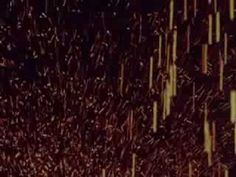















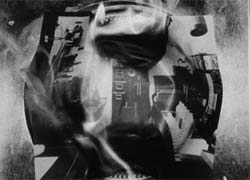






















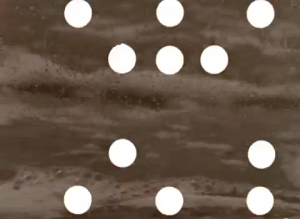




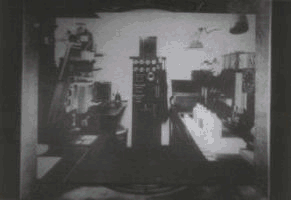













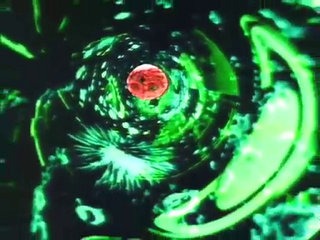


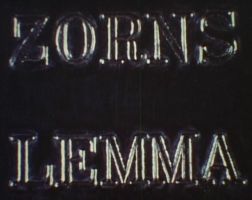
_____
Further
Hollis Frampton Website
Hollis Frampton @ IMDb
A Hollis Frampton Odyssey @ The Criterion Collection
Hollis Frampton’s Lemon Analysis— The Nature of Film and Vision
Hollis Frampton ou le hors-champ du cinéma : le projet Magellan
A Hollis Frampton Odyssey reviewed @ Slant
Exploded View | Hollis Frampton’s Critical Mass
Pattern Recognition: The Writings of Hollis Frampton
Video: Hollis Frampton interviewed
He’s Got Rhythm: ‘A Hollis Frampton Odyssey’
A Keyboard Mind: Hollis Frampton’s Gloria! as Lyric Poem
The look of the thing: Hollis Frampton’s photography
Letters of Note: For Love and Honor
A Riddle in Temporality: Hollis Frampton’s Nostalgia
History and Ambivalence in Hollis Frampton’s Magellan
How Should Artists Be Paid?: Hollis Frampton’s Letter to MoMA and the Price Artists Pay for Autonomy
Hollis frampton UNE CONFÉRENCE
Hollis Frampton Revival
ON THE CAMERA ARTS AND CONSECUTIVE MATTERS: THE WRITINGS OF HOLLIS FRAMPTON
KERRY TRIBE RESTAGES HOLLIS FRAMPTON’S CRITICAL MASS
A Pentagram for Conjuring Hollis Frampton
hollis frampton | VISCER-ebr-AL – Objectively Speaking
____
Extras
A documentary on Hollis Frampton made in 1981.
Screening Room with Hollis Frampton – PREVIEW
Hollis Frampton at Chatham College 1971
Michael Snow on Hollis Frampton and Public Speaking
Hollis Frampton Panel
_______
A Lecture
by Hollis Frampton
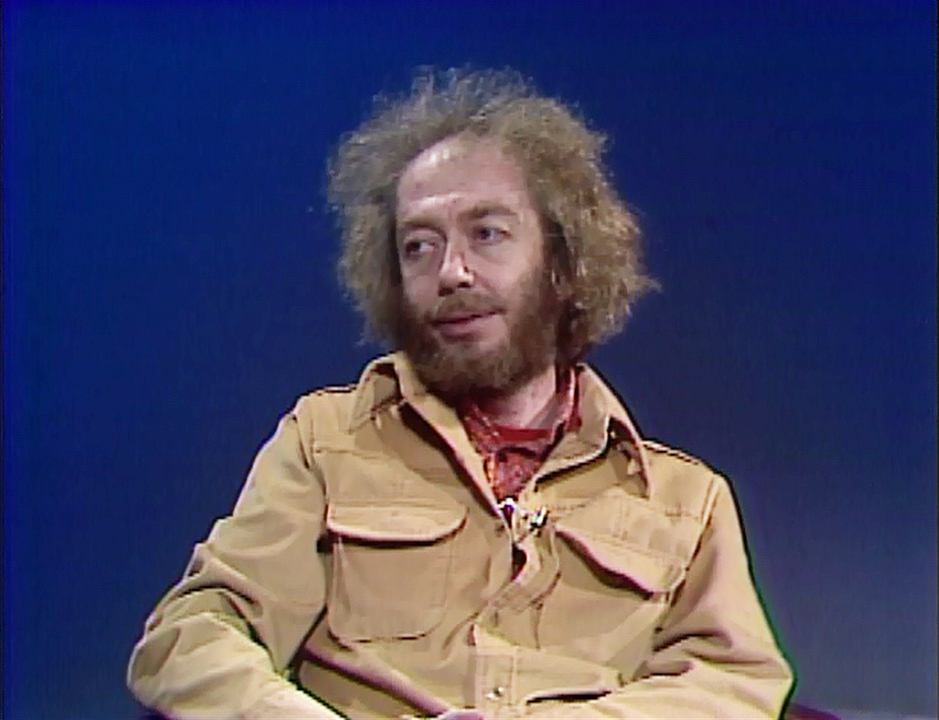
Please turn out the lights.
As long as we’re going to talk about films, we might as well do it in the dark.
We have all been here before. By the time we are eighteen years old, say the statisticians, we have been here five hundred times.
No, not in this very room, but in this generic darkness, the only place left in our culture intended entirely for concentrated exercise of one, or at most two, of our senses.
We are, shall we say, comfortably seated. We may remove our shoes, if that will help us to remove our bodies. Failing that, the management permits us small oral distractions. The oral distractions concession is in the lobby.
So we are suspended in a null space, bringing with us a certain habit of the affections. We have come to do work that we enjoy. We have come to watch this.
The projector is turned on.
So and so many kilowatts of energy, spread over a few square yards of featureless white screen in the shape of a carefully standardized rectangle, three units high by four units wide.
The performance is flawless. The performer is a precision machine. It sits behind us, out of sight usually. Its range of action may be limited, but within that range it is, like an animal, infallible.
It reads, so to speak, from a score that is both the notation and the substance of the piece.
It can and does repeat the performance, endlessly, with utter exactitude.
Our rectangle of white light is eternal. Only we come and go; we say: This is where I came in. The rectangle was here before we came, and it will be here after we have gone.
So it seems that a film is, first, a confined space, at which you and I, we, a great many people, are staring.
It is only a rectangle of white light. But it is all films. We can never see more within our rectangle, only less.
A red filter is placed before the lens at the word “red.”
If we were seeing a film that is red, if it were only a film of the color red, would we not be seeing more?
No.
A red film would subtract green and blue from the white light of our rectangle.
So if we do not like this particular film, we should not say: There is not enough here, I want to see more. We should say: There is too much here, I want to see less.
The red filter is withdrawn.
Our white rectangle is not “nothing at all.” In fact, it is, in the end, all we have. That is one of the limits of the art of film.
So if we want to see what we call more, which is actually less, we must devise ways of subtracting, of removing, one thing and another, more or less, from our white rectangle.
The rectangle is generated by our performer, the projector, so whatever we devise must fit into it.
Then the art of making films consists in devising things to put into our projector.
The simplest thing to devise, although perhaps not the easiest, is nothing at all, which fits conveniently into the machine.
Such is the film we are now watching. It was devised several years ago by the Japanese filmmaker Takehisa Kosugi.
Such films offer certain economic advantages to the filmmaker.
But aside from that, we must agree that this one is, from an aesthetic point of view, incomparably superior to a large proportion of all films that have ever been made.
But we have decided that we want to see less than this.
Very well.
A hand blocks all light from the screen.
We can hold a hand before the lens. This warms the hand while we deliberate on how much less we want to see.
Not so much less, we decide, that we are deprived of our rectangle, a shape as familiar and nourishing to us as that of a spoon.
The hand is withdrawn.
Let us say that we desire to modulate the general information with which the projector bombards our screen. Perhaps this will do.
A pipe cleaner is inserted into the projector’s gate.
That’s better.
It may not absorb our whole attention for long, but we still have our rectangle, and we can always leave where we came in.
The pipe cleaner is withdrawn.
Already we have devised four things to put into our projector.
We have made four films.
It seems that a film is anything that may be put in a projector that will modulate the emerging beam of light.
For the sake of variety in our modulations, for the sake of more precise control of what and how much we remove from our rectangle, however, we most often use a specifically devised material called: film.
Film is a narrow transparent ribbon of any length you please, uniformly perforated with small holes along its edges so that it may be handily transported by sprocket wheels. At one time, it was sensitive to light.
Now, preserving a faithful record of where that light was, and was not, it modulates our light beam, subtracts from it, makes a vacancy, a hole, that looks to us like, say, Lana Turner.
Furthermore, that vacancy is doing something: it seems to be moving.
But if we take our ribbon of film and examine it, we find that it consists of a long row of small pictures, which do not move at all.
We are told that the explanation is simple: all explanations are.
The projector accelerates the small still pictures into movement. The single pictures, or frames, are invisible to our failing sense of sight, and nothing that happens on any one of them will strike our eye.
And this is true, so long as all the frames are essentially similar. But if we punch a hole in only one frame of our film, we will surely see it.
And if we put together many dissimilar frames, we will just as surely see all of them separately. Or at least we can learn to see them.
We learned long ago to see our rectangle, to hold all of it in focus simultaneously. If films consist of consecutive frames, we can learn to see them also.
Sight itself is learned. A newborn baby not only sees poorly—it sees upside down.
At any rate, in some of our frames we found, as we thought, Lana Turner. Of course, she was but a fleeting shadow—but we had hold of something. She was what the film was about.
Perhaps we can agree that the film was about her because she appeared oftener than anything else.
Certainly a film must be about whatever appears most often in it.
Suppose Lana Turner is not always on the screen.
Suppose further that we take an instrument and scratch the ribbon of film along its whole length.
Then the scratch is more often visible than Miss Turner, and the film is about the scratch.
Now suppose that we project all films. What are they about, in their great numbers?
At one time and another, we shall have seen, as we think, very many things.
But only one thing has always been in the projector.
Film.
That is what we have seen.
Then that is what all films are about.
If we find that hard to accept, we should recall what we once believed about mathematics.
We believed it was about the apples or peaches owned by George and Harry.
But having accepted that much, we find it easier to understand what a filmmaker does.
He makes films.
Now, we remember that a film is a ribbon of physical material, wound up in a roll: a row of small unmoving pictures.
He makes the ribbon by joining large and small bits of film together.
It may seem like pitiless and dull work to us, but he enjoys it, this splicing of small bits of anonymous stuff.
Where is the romance of moviemaking? The exotic locations? The stars?
The film artist is an absolute imperialist over his ribbon of pictures. But films are made out of footage, not out of the world at large.
Again: Film, we say, is supposed to be a powerful means of communication. We use it to influence the minds and hearts of men.
But the artist in film goes on building his ribbon of pictures, which is at least something he understands a little about.
The pioneer brain surgeon Harvey Cushing asked his apprentices: Why had they taken up medicine?
To help the sick.
But don’t you enjoy cutting flesh and bone? he asked them. I cannot teach men who don’t enjoy their work.
But if films are made of footage, we must use the camera. What about the romance of the camera?
And the film artist replies: A camera is a machine for making footage. It provides me with a third eye, of sorts, an acutely penetrating extension of my vision.
But it is also operated with my hands, with my body, and keeps them busy, so that I amputate one faculty in heightening another.
Anyway, I needn’t really make my own footage. One of the chief virtues in so doing is that it keeps me out of my own films.
We wonder whether this interferes with his search for self-expression.
If we dared ask, he would probably reply that self-expression interests him very little.
He is more interested in reconstructing the fundamental conditions and limits of his art.
After all, he would say, self-expression was only an issue for a very brief time in history, in the arts or anywhere else. And that time is about over.
Now, finally, we must realize that the man who wrote the text we are hearing read has more than a passing acquaintance and sympathy with the filmmaker we have been questioning.
For the sake of precision and repeatability, he has substituted a tape recorder for his personal presence—a mechanical performer as infallible as the projector behind us.
And to exemplify his conviction that nothing in art is as expendable as the artist, he has arranged to have his text recorded by another filmmaker, Mr. Michael Snow, whose voice we are hearing now.
If filmmakers seldom appear in their own films, there is ancient precedence of appearing in one another’s works. D. W. Griffith appeared in a work of Porter’s. Fritz Lang appeared in a film of Godard’s. And this is not the first time Mr. Snow and the present writer have reciprocated.
Since the speaker is also a filmmaker, he is fully equipped to talk about the only activity the writer is willing to discuss at present.
There is still time for us to watch our rectangle awhile.
Perhaps its sheer presence has as much to tell us as any particular thing we might find inside it.
We can invent ways of our own to change it.
But this is where we came in.
Please turn on the lights.
_________
21 of Hollis Frampton’s 51 films
_____________
A and B in Ontario (1984)
‘“Hollis and I came back to Toronto on holiday in the summer of ’67. We were staying at a friend’s house. We worked our way through the city and eventually made it to the island. We followed each other around. We enjoyed ourselves. We said we were going to make a film about each other – and we did.” – Joyce Wieland A & B in Ontario was completed eighteen years after the original material was shot. After Frampton’s death, the film was assembled by Wieland into a cinematic dialogue in which the collaborators (in the spirit of the sixties) shoot each other with cameras.’ — letterboxd
the entire film
_____________
Magellan Cycle (1977 – 1980)
‘Had it been completed, Hollis Frampton’s 369-day-long megamovie Magellan could have been the ultimate structuralist monument. Planned around the conceit of Ferdinand Magellan’s global circumnavigation, Magellan was to comprise a liturgical calendar of approximately 1,000 films, with Lumière-inspired miniatures of just a few minutes screening on most days, and longer works on equinoxes, solstices, and other special dates. Within this solar epic, Frampton envisioned numerous “subsections and epicycles,” completing a macrocosmic engine reminiscent of an astrolabe’s nested gears or a computer program’s subroutines—the latter suggested by Frampton’s dot-matrix-printed schedule created in 1978, “CLNDR version 1.2.0,” each day numbered like a line of code. Like his project’s namesake, Frampton died before reaching his goal, completing only eight out of the proposed 36 hours of film. But these fragments evoke the whole.’ — Village Voice
Excerpt
Excerpt
_____________
Gloria! (1979)
‘In GLORIA! Frampton juxtaposes nineteenth-century concerns with contemporary forms through the interfacing of a work of early cinema with a videographic display of textual material. These two formal components (the film and the texts) in turn relate to a nineteenth-century figure, Frampton’s maternal grandmother, and to a twentieth-century one, her grandson (filmmaker Frampton himself). In attempting to recapture their relationship, GLORIA! becomes a somewhat comic, often touching meditation on death, on memory and on the power of image, music and text to resurrect the past.’ — letterboxd
the entire film
_____________
Not the First Time (1976)
‘This film is composed of different and relatively commonplace subjects, but each image is a super-imposition (‘double exposure’) of two similar shots of the same subject, almost in the same position. The effect is amazing: one’s gaze at the image becomes a double gaze, as the two images were made at different times and with slightly different framing. The viewer is engaged in a process of double-vision that returns him to image and subject in a manner more complex, more self-aware, and more temporal than the way most of us view photographs.’ — Fred Camper
the entire film
_____________
Autumnal Equinox (1974)
‘Autumnal Equinox (1974) was shot inside a meat-packing plant, and shot using 30 mm film that contained bovine jelly – further pushing the boundaries of experimental film.’ — collaged
the entire film
_____________
Pan (0 – 4) (697 – 700) (1974)
‘Frampton planned for a whopping 720 of these one-minute “Panopticons” to be shown throughout the project. Perhaps something like visual palate cleansers.’ — Martin Teller
Pan (0 – 1)
Pan 2
Pan 3
___________
Winter Solstice (1974)
‘An experimental short by Hollis Frampton who films a couple and their dog as they walk farther away into the woods.’ — IMDb
the entire film
____________
Noctiluca (Magellan’s Toys: #1) (1974)
‘Noctiluca is a three and one-half minute film designed to be shown on the second day of the MAGELLAN cycle. The title (nox/luceo) means something that shines by night, i.e., the moon, and the film indeed consists of a bright sphere, sometimes white, sometimes tinted, sometimes single, sometimes doubled and overlapped. This suggests to me the nocturnal navigation that Magellan had to rely upon in his first-ever trip around the world. (The second day of the cycle seems to be an inventory of the knowledge, machines, and arms that Magellan–and latterday voyagers like Frampton–had at the outset of his journey.) The film also refers of course to Stan Brakhage’s much longer, and monumental, 1973 film TEXT OF LIGHT, which studied the prismatic reflections occasioned by sunlight passing through a glass ashtray. Frampton’s film is, characteristically, more controlled and economical than Brakhage’s, but no less beautiful.’ — Brian Henderson
the entire film
_________
Less (1973)
‘Near the end of 1973, Frampton realized that he had not finished a single film over the course of a year. He promptly conceived and executed LESS, a doubly punning work in which a minimalist Frampton generates a twenty-four frame (one-second) loop of the incremental blacking out of a nude image by photographer Les Krims.’ — Bruce Jenkins
the entire film
____________
Hapax Legomena II: Poetic Justice (1972)
‘Frampton’s films expose, dismantle, and reorganize the structure of the medium while opening onto numerous branches of knowledge, including natural history, poetry, and linguistic theory. Poetic Justice, the second film in Framptons seven-part series Hapax Lagomena (1971–72), presents the viewer with an ordinary domestic scene: a stack of papers, a cup of coffee, and a potted cactus on a table. The sheets of paper compose a script that provides handwritten, frame-by-frame instructions for a film that unfolds only in the mind of the viewer; with the revelation of each page, the viewer is called upon to mine his or her own inventory of images. The desire to construct a linear narrative is countered by a series of spatial and temporal incongruities that collapse the distinction between filmic space and the physical realm of the viewer.’ — MoMA
the entire film
_____________
Apparatus Sum (1972)
‘A brief lyric film of death, which brings to equilibrium a single reactive image from a roomful of cadavers.’ — HF
the entire film
____________
Tiger Balm (1972)
‘After two years of massive didacticism in black-and-white [Hapax Legomena (1971-72)], I am surprised by Tiger Balm, lyrical, in color, a celebration of generative humors and principles, in homage to the green of England, the light of my dooryard… and consecutive matters.’ — HF
the entire film
_____________
Hapax Legomena I: Nostalgia (1971)
‘”In (nostalgia), Frampton is clearly working with the experience of cinematic temporality. The major structural strategy is a disjunction between sound and image. We see a series of still photographs, most of them taken by Frampton, slowly burning one at a time on a hotplate. On the soundtrack, we hear Frampton’s comments and reminiscences about the photographs. As we watch each photograph burn, we hear the reminiscence pertaining to the following photograph. The sound and image are on two different time schedules. At any moment, we are listening to a commentary about a photograph that we shall be seeing in the future and looking at a photograph that we have just heard about. We are pulled between anticipation and memory. The nature of the commentary reinforces the complexity; it arouses our sense of anticipation by referring to the future; it also reminisces about the past, about the time and conditions under which the photographs were made. The double time sense results in a complex, rich experience.’ — Bill Simon
the entire film
_____________
Zorns Lemma (1970)
‘Originally starting as a series of photographs, the non-narrative film Zorns Lemma is structured around a 24-letter Latin alphabet. It remains, along with Michael Snow’s Wavelength and Tony Conrad’s The Flicker, one of the best known examples of structural filmmaking. The opening section of Zorns Lemma is 5 minutes long. In it a woman reads an abecedary of 24 couplets from The Bay State Primer, an eighteenth century book designed to teach children the alphabet. The film is entirely black during this section. A letter A stamped on tin foil, the first of 24 such letters shown at the beginning of the second section. The film’s main section is silent and lasts 45 minutes, broken into 2,700 one-second units. It shows the viewer an evolving 24-part “alphabet”. The section begins by presenting each letter typed on a sheet of tin foil. The alphabet is initially composed of words that appear on street signs, photographed in Manhattan. As the film continues to cycle through the alphabet, individual letters are slowly substituted with images. The first four substitutions—fire (x), waves (z), smoke (q), and reeds (y)–depict the four classical elements. The film’s conclusion lasts 10 minutes. It shows a man, woman and dog walking through snow. During this scene, six women’s voices alternate in reading the words of a passage from On Light, or the Ingression of Forms by Robert Grosseteste. The voices read at a rate of one word per second.’ — collaged
the entire film
____________
Artificial Light (1969)
‘Artificial Light repeats variations on a single filmic utterance twenty times. The same phrase is a series of portrait shots of a group of young New York artists talking, drinking wine, laughing, smoking, informally. The individual portrait-shots follow each other with almost academic smoothness in lap-dissolves ending in two shots of the entire group followed by a dolly shot into a picture of the moon… There is a chasm between the phrase and its formal inflections. That chasm is intellectual as well as formal. Frampton loves an outrageous hypothesis; his films, all of them, take the shape of logical formulae.’ — P. Adams Sitney
the entire film
_________
Lemon (1969)
‘Lemon, ostensibly a one-shot film, representing a radical pairing down of materials and methods: It is silent, static and unedited. This arrestingly spare portrait of a seeming “Superstar Fruit” begins in darkness, as gradually, a Lemon comes into sight. This film shows how Important Lighting can be.’ — TENRAG
the entire film
____________
Palindrome (1969)
‘The menacing latin palindrome ‘In Girvm Imvs Nocte Et Consvmimvr Igni’ (By night we go (down) into a gyre/and we are consumed by fire) serves as epigraph to this animated film. Anima is imparted to 12 variations on each of 40 congruent phrases, metamorphosed from the chemically mutilated flesh of color film itself.’ –– collaged
the entire film
_____________
Surface Tension (1968)
‘Surface Tension, as the name suggests, concerns itself with the way objects move on a surface with a varying degree of “film.” Scientifically speaking, the greater the amount of film the more difficult it is for an object to move. In Hampton’s film this is not the case, in fact, it is how he alters the film that allows the material to move in an either slower or faster rate. It is only the sound that seems to move at a consistent pace, but that, arguably, has nothing to do with film and exists on its own plane of experience. Frampton even went so far as to claim that the film was about three separate notions of space, one being comedic, one scientific and a third being something in between. With this in mind it helps explain the three segments of the film, one involving a man talking whilst standing next to a clock. With the sound removed, we are left perplexed over the man’s discussion that is faster than normal and only have the incessant ringing of a phone as comfort. The second section, the scientific portion of the film, follows a camera fast forwarded through the streets as incomprehensible German is dubbed over. We are only able to pull worlds like “chocolat” from the man’s dialogue, which is juxtaposed with incredibly murky water. The final section is of a fish in an aquarium on the beach. The rate of the film is normal this time as we watch the ebb and flow of the tide consume the tank, but never take the fish. Simultaneously words appear on the screen that have no coherent meaning, but appear to refer to the film as a whole in some manner. Neither comedic nor serious, this portion of the film is clearly the hybrid of the previous portions, yet it is always affected by what Frampton has done to intervene with the film stock. Ultimately, the film is book-ended by crashing tides, perhaps suggesting that no amount of intervention can stop surface tension, when the force is greater than the film trying to interfere. A deeply profound commentary on the entire state of filmmaking, particularly considering it is a question film theorist haves struggled over for almost a century. What Frampton does with Surface tension, is definitively answer that question, or at least provide a philosophical positing so grand that to overcome it would be to some extent inconceivable.’ — Cinemalacrum
the entire film
_____________
Snowblind (1968)
‘Homage to Michael Snow’s environmental sculpture ‘Blind.’ The film proposes analogies, in imitation of 3 historic montage styles, for three perceptual modes mimed by that work.” — Hollis Frampton
the entire film
_____________
Heterodyne (1967)
‘I began to make it when I had no money for raw stock and only several rolls of colored leader but nevertheless (had) the need to make or work on a film.’ — HF
the entire film
_____________
Manual of Arms (1966)
‘In this “fourteen-part drill for the camera,” Frampton created a portrait gallery of his art-world friends engaging in a variety of ordinary activities.’ — letterboxd
the entire film
*
p.s. Hey. So tomorrow I have to head way back out west to Cherbourg early in the morning for another day of location work for Zac’s and my film, so I won’t be here to do the p.s. I’ll catch up with today’s and tomorrow’s comments on Wednesday. I’ll probably have to do the same thing again on Thursday or/and Friday for those who want to mark their calendars in pencil. ** Steevee, Hi. Zyprexa seems really, really insidious. It sounds like continuing at the lowest dose you can is the only sane way to go, and I hope your doctor either gets that or has some other miracle in mind. I haven’t seen ‘Elephant Man’ in ages. I suppose I remember that it seemed a bit like Lynchianism on assignment, but I don’t know. How does it stand? Okay, I’ll seek out the Solomon book, thank you ** H, Hi. Thanks, I’m glad a couple of them were of interest. Like I said, I’m spoiled by the Paris metro. It’s so well organized and largely efficient. People complain its grungy, but, compared to NYC’s, say, it’s really more like it has a lot of character to me. Plus, people are basically and even mysteriously very well mannered on the trains and platforms. I don’t know. ** Sypha, Hi, James. I’m sorry to hear of your recent health hampering. Glad you’re in the bend phase. I get why the third era Fleetwood Mac (w/Nicks, Buckingham, etc.) is so well liked and critically upheld and all of that. It doesn’t do much for me personally other than creating reminiscences of the era when they were King, although the craft there is obviously unimpeachable. It does kind of interest me how it’s very adult and seeking flexibility within an overall goal of refining and maintaining tastefulness and all of that. ** David Ehrenstein, I remember the NYC subway being fun as late as the late 70s and mid-80s, maybe even later? I don’t know. Glad the books intrigued you. I just think it seems way past time that Gus go back to making films that seem to mean much of anything to him and give him an opportunity to play and experiment. ** Misanthrope, Cool about the appeal of those two books. I like happy textual accidents. I mean where would the escort posts be without them? I think I wake up during the night, but, except in rare instances, my dreams slam the door on me when I do. Even when I remember them, they’re never colorful like yours. Strange. I wonder what it means. ** Ferdinand, Hi. Well, I will most assuredly hit that link what with that helluva build up. Cool, thanks for the tip, man. ** Dóra Grőber, Hi! Yeah, I’m in a very lucky situation where people just send me books by mail and pdfs by email I guess because they know I’m probably interested and, I guess, because I do those ‘loved’ posts. There are still negotiations going on about the pinatas. I think we might have to give up one of most ambitious-to-make ones. Money’s tight. We’re starting to get that on a whole lot of levels. Either the guy we’re auditioning today or a guy we’re auditioning in Cherbourg tomorrow will be ‘the one’, or we’ll cast this one guy we auditioned a couple of weeks ago who’s kind of our ‘fall back’ choice, and who I personally think could be really good. You’re writing a lot! So great! Very happy making news! My weekend was, yes, a bunch of film stuff. We need to nail down five music tracks that we can use for minimal payment, and that’s ongoing concern right now. And lots and lots of detail and technical work that isn’t very interesting or easy to describe. Had a meeting about the TV series project with our producers which was not very conclusive, so basically we have to just sit tight and wait for the very delayed yes or no from the TV station that’s considering it before we start thinking about how to shop it around elsewhere if we have to. Talked to some friends, almost finished unpacking, stuff like that. It was okay. Did Monday continue your weekend-long winning streak on the pleasure front? ** Jamie, Heighty-ho, Jamie! Busy is how my weekend was. Good, nothing horrible or anything. The TV meeting wasn’t a yes or no thing. It was a progress report from the producer about where we are in the process of getting a yes or no, and the report was that we remain dangling and waiting. Huh, that’s interesting about that cut-up thing Sinclair read, Okay, you make me want to dip back into his stuff. Oh, if I’d guessed, I would have guessed the viva was what you say it is. Best of the best of luck to her today. The vibe I’m getting is that she’ll ace it. Did she? Better bad luck than miserableness. Well, as long as the bad luck stays on a weird, lite level, I guess. I do enjoy all the film work, yes. A lot, even. It’s just kind of exhausting because it never stops now. I don’t like having our plans crimped by budget concerns, but I understand that. But, yeah, it’s all exciting, and I’m really confident that our film is going to be great, and that helps a lot. I hope you’re very well too, my friend! What’s up with Monday and you? Tinkering love, Dennis. ** _Black_Acrylic, Hi, Ben. I think you’ll really like the Jen George book. It’s very pleasurable. I actually was sent that Tim Lawrence book, and I was just an hour ago thinking it might be my train-to-Cherbourg time occupier. I was living in NYC during part of that golden age of clubs, and it was pretty great and utopian and such a blast, I must say. ** Right. I made a big day about the big, seminal experimental filmmaker Hollis Frampton today for you to pick apart or wade through or whatever else you feel like doing with it. The blog will see you without me tomorrow, and we both will be here again to greet and blab with you on Wednesday.




 Now available in North America
Now available in North America 
i’ve decided I have indeed become unhealthily obsessed with Zyprexa, addiction, withdrawal, etc. and wound up over-sharing in some public forums under my real name, which was really dumb. All I can do at the moment is continuing to take the current dosage till I see my doctor face to face on April 18th. I’ve sent him several E-mails explaining my rationale for this plan, but he says he wants to hold off on discussing it till we can do it in person. Anyway, I want to stop talking about it, (if at all possible) stop thinking about it and try to relax for the next 3 weeks.
I loved THE ELEPHANT MAN. It actually seemed like a logical next step from ERASERHEAD in terms of its cinematography and use of industrial textures, despite the vast differences in scale and budget, and in a weird way, it struck me as a reflection on having made ERASERHEAD and depicted extremes of human behavior in a way that some might find exploitative.
I did finally get my new computer yesterday. My friend eventually explained that he has a severe phobia about socializing with people and often goes a week without seeing anyone but his wife and co-workers. Unfortunately, this makes it extremely difficult to work with him on picking up a computer – even though he came in from Long Island to midtown Manhattan carrying the computer, his behavior indicated that he still wanted to back out and bail on meeting me. He would suggest a meeting place, not show up, I would call his cell phone, he’d suggest another meeting place and not show up. Finally on the third try, I finally tracked him down at a cafe on 29th St. Once we both arrived at the same place and sat down, things went quite smoothly.
I know I just said I’d stop talking about Zyprexa, but I talked with another pharmacist, and she also said that my current dose is low enough to be harmless while probably still helping with my anxiety.
Hollis Frampton was (and still is ) highly problematic. While his films are not without interest (especially “Zorns Lemma” and “Nostalgia”) his pretentious preening is hard to bear. He played the man who dies in Snow’s “Wavelength.” But where Snow was (and I trust still is) an utterly delightful person, Frampton was exceedingly hard to take. The only time I recall liking him was at the press screening of “Zorns Lemma” at the New York Film Festival where he made mincemeat of John Simon. Annette Michaelson worshipped Hollis. Hollis worshipped Ezra Pound — which I think explains a lot.
Been fascinated with Frampton’s work for a few years but have never delved in fully. Now is obviously the time!
Hi Dennis, sorry for the lag. How’s the Cherbourg stuff? Things are good. I’ve been bumped up to lecturing full time instead of contract, so that has kind of swallowed my life at the moment… but luckily I enjoy teaching so that’s good if exhausting. Actually feeling a bit burnt out at the moment, but easter break is around the corner… so I’ll spend some time sending the manuscript around again (had some good feedback and looked positive and moving forward but ultimately passed and then haven’t had interest from the rest of first round and haven’t had the time to pursue it since)… so that’s my plans for the next bit. I’ve also been working on a bunch of new video and sound work that is sort of conceptual sound pieces from youtube material… haha sort of a Matter-Clark of youtube… but I’ll be releasing the audio as tapes at some point. That’s my hopeful plans for a holiday… you? Oh at some point if I ever get time I might put together a day for you about an artist called KA that is on my MA course and making interesting video and digital work. She was recently in one of Arca’s music videos for his new album and is a generally interesting person in general.
P.S. is there any more context for your GIF novel that has been turned into the hour long video by someone? I was watched it for a while the other day and it’s surprisingly mesmerising (or maybe not surprisingly?).
Hey Dennis! How was Cherbourg? Think I’m going to have a pretty busy Tuesday, so I’m saying hi now (Monday night) to you on Wednesday morning. Trippy, like time travel.
The Hollis Frampton films I watched so far are pretty beautiful and/or striking. Thanks for the post. I only watched the short ones so far as I’m super tired and off to bed soon.
Ta for very much for your good wishes for Hannah’s viva. And you were right – she aced it! The examiners only corrections were a couple of typos and they said it was ‘excellent work’. Hannah is on a total high as she wasn’t feeling too confident. So, we’re off out for a celebration dinner when I arrive back from Newcastle tomorrow.
The funny thing about Iain Sinclair doing the cut-up thing was him talking about the process and saying as the words fell he felt a voice coming through that really didn’t feel like his voice, but the piece he read was like Super-Sinclair, like concentrated him, or something. I kind of think his book Downriver made me physically ill last year.
Those TV folks love to keep one dangling, it seems. Did they give you a further date? I’m glad you’re getting some fun and enjoyment out of the film process. I hope that heavily outweighs the stress and headaches.
Okay, I’m off to bed. I have to find a new emergency stand-in illustrator tomorrow, as our emergency stand-in illustrator has gone awol.
Have nice days!
Spiraling love,
Jamie
I really like the look of Frampton’s work, at least from first glance, and I’ll spend more time with it tomorrow. I’m back in Dundee as of tonight and I feel good for having had a weekend of family time.
@ DC, here’s hoping that Cherbourg is proving productive.
Dennis, Hollis Frampton is new to me. Put another notch in your educating-George belt.
Sypha turned me on to this 1964 movie, “This Special Friendship.” Man, for its time -actually, for today too- it’s subversive as fuck. A movie like that couldn’t get made today.
I think you have a very exciting, fulfilling, rewarding life and have no need of dreams. I’m the opposite, I live in them, both waking and sleeping, because my life’s bland as a fucking rock. But that’s my fault.
Last night, I dreamt I was arguing age-of-consent laws with some dude. He’s like, “No one under 18 has the capacity to consent to sex.” I’m like, “So when two 15-year-olds fuck, are they raping each other or did it just never happen? And why do we charge 14-year-olds who don’t have the capacity to consent to sex as adults when they murder someone?” Nothing really crazy in that dream, except that I spent all of it arguing this shit with someone I didn’t know. 😛
This is good